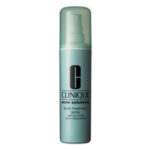Chemical peels have long been used as a way to improve the look of skins after excessive exposure to harmful UV rays. For many adults, chemical peels reverse the appearance of aging and rejuvenate skin. If you are considering a chemical peel, it is important to know not only what the final outcome will be but what combinations and types of chemicals peels may be considered in your treatment.
As a general rule, there are three classifications to chemical peels are determined by the depth in which the peel works to rejuvenate your skin. The chemicals used in the chemical peel will play a significant role but, even more importantly, the concentration level, type of chemical application and even the type of skin you have will be determining factors. Understanding all of these chemical peel factors, in addition to treatment time, recovery time and potential side effects is important to obtaining more beautiful and younger looking skin.
In most chemical peels, the use of hydroxyl acid is common. Also commonly referred to as AHA, hydroxyl acid is a weak acid and, in most cases, the version known as glycolic acid is used on new patients who seek chemical peel treatment. Usually applied using gauze, q-tips or even an applicator known as a brash, the peel is a thin layer of chemical applied directly to the skin. With mild skin complications, this type of low dose chemical peel will provide rejuvenation to most individuals who seek therapy early in the aging process.
Beyond the glycolic acid peel, some adults may require more advanced forms of chemical peels. Known as salicylic acid chemical peels, these types of peels provide more of an exfoliating factor. Used on all skin types, the salicylic acid chemical peels are especially important for those individuals with a history of acne or other skin disorders. If you have brown spots on your face, sun damage and mild to moderate areas of general pigmentation complications, the salicylic acid chemical peel may be the right option in chemical peels for you.
And, finally, the tretinoin peel is an option for those that wish to improve the tone and color of their skin. As a peel that is used to not only rejuvenate the skin but also color the face, this chemical peel generally takes the longest, often requiring at least six hours for entire processing. This type of peel is only used in select groups of the population and is often applied in the early evening hours due to potential adverse outcomes when exposed to light. When applied successfully, it can improve and rejuvenate an even color of skin in most women.
When considering a chemical peel for your rejuvenation or anti-aging treatment, it is important to ask your physician about the type of chemical peel to be used. In many cases, with mild to moderate sun and aging damage, the physician will utilize the salicylic acid chemical peel with great success. However, if you are concerned about the potential side effects and recovery, you may want to begin with a more mild form of chemical peel and ask about the use of glycolic acid instead. Only in rare cases should your physician recommend the tretinoin peel in your rejuvenation therapy.



